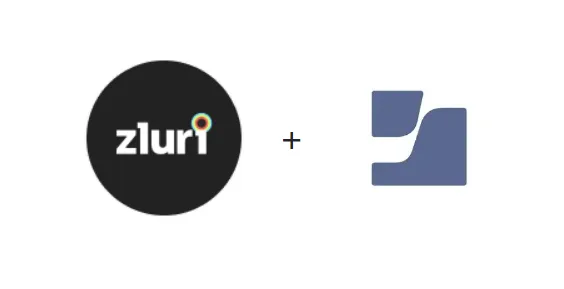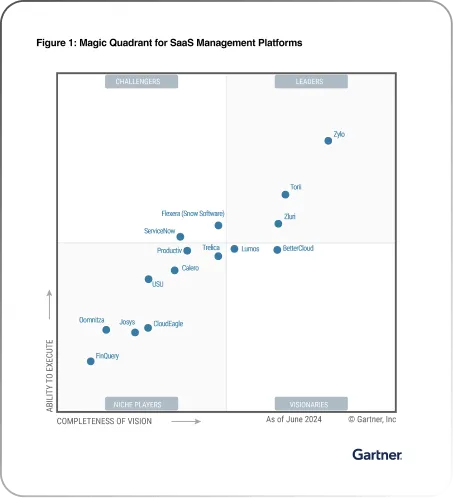Navigating enterprise devices has become an increasingly intricate challenge, demanding innovative solutions to ensure seamless operations.
Amid this complexity, device lifecycle management emerges as a critical factor for IT managers. It offers structured solutions to streamline the management of diverse devices.
Managing enterprise devices is a complex task due to the diverse ecosystem in which they operate. Enterprises commonly employ a variety of devices, including smartphones, tablets, laptops, and desktop computers, all running different operating systems like iOS, Android, Windows, and macOS.
The challenge lies in ensuring seamless integration and compatibility among these devices while managing stringent security protocols and software updates.
Addressing the diverse needs of various user groups adds another layer of complexity. Enterprises must consider mobility requirements, software preferences, and hardware specifications when managing these devices effectively.
Striking a balance between upgrading devices to meet evolving technological standards and maintaining cost-effectiveness is crucial. Proper maintenance, timely upgrades, and efficient disposal of obsolete devices are integral components of a well-rounded device management strategy.
Device lifecycle management helps enterprises navigate the complexities of managing diverse devices by providing a structured approach to device acquisition, usage, and retirement.
This approach ensures optimal performance, cost-effectiveness, security, compatibility, and a positive user experience while promoting environmental sustainability and strategic planning. But first, let’s understand what device lifecycle management is in-depth.
What is Device Lifecycle Management?
Device lifecycle management (DLM) is a strategic approach focused on maximizing the efficiency and productivity of devices within an organization. It encompasses a systematic process that involves careful planning, procurement, provisioning, maintenance, and decommissioning of devices employees use during their work activities.
One of the key aspects of DLM is the systematic recording of each device's history using unique asset numbers. These numbers serve as identifiers, allowing organizations to maintain a centralized database containing detailed information about all technical products owned by the company.
This database stores crucial data such as the device's purchase date, maintenance records, software configurations, and user assignments.
2 Types of Device Lifecycle Management
Here are the key types of device lifecycle management:
1. Mobile Device Lifecycle Management
Mobile device lifecycle management (MDLM) is a specialized approach that oversees laptops, tablets, and smartphones. It distinguishes itself from the management of traditional desktop computers by addressing the unique challenges and considerations presented by mobile devices.
One of the key challenges in MDLM is adapting to the impact of remote work on device management. This includes devising strategies for procuring, provisioning, and retrieving devices from employees in different locations. The rise of remote work has necessitated a more flexible and dynamic approach to managing mobile devices effectively.
Furthermore, MDLM places a strong emphasis on cybersecurity. Implementing additional security measures is crucial for employees accessing company data from home or public spaces. This includes enhancing protocols to protect sensitive information, making cybersecurity an integral part of the mobile device lifecycle management strategy.
2. IoT Device Lifecycle Management
IoT device lifecycle management (IoT DLM) is a specialized approach designed to oversee the entire lifecycle of Internet of Things (IoT) devices, which include a diverse range of interconnected equipment such as printers, smart TVs, speakers, building security systems, and more.
Unlike traditional devices like laptops and smartphones, IoT devices play a crucial role in modern business operations by exchanging data and interacting with the broader network infrastructure. One of the distinctive challenges in managing IoT devices lies in their unique security vulnerabilities. These devices often operate on different platforms, making them susceptible to various security threats.
An IoT device's security breach can have far-reaching consequences, impacting many employees or critical business functions. Therefore, it is essential to incorporate IoT devices into your overall device lifecycle management strategy.
IoT DLM involves comprehensive planning, procurement, deployment, monitoring, maintenance, and eventual decommissioning of these devices. Implementing stringent security measures, regularly updating firmware and software, and ensuring seamless integration with existing network protocols is vital. Additionally, you must proactively anticipate potential issues and disruptions, as IoT devices are integral to functioning various business processes.
Benefits of Device Lifecycle Management
Device lifecycle management offers numerous benefits, ensuring efficient utilization of resources, enhanced security, and streamlined operations throughout the lifecycle of devices.
Cost savings through strategic device management
- Precise Planning for Device Lifespan: DLM provides invaluable insights into device lifespans, allowing for meticulous planning, informed budgeting, and preventing unforeseen costs during transitions.
- Resource Optimization: By maintaining a vigilant inventory and monitoring usage patterns, DLM eliminates duplicate purchases, maximizes existing hardware investments, and minimizes unnecessary expenditures.
- Empowered Vendor Negotiations: Armed with comprehensive data on device requirements and replacement schedules, organizations engage in vendor discussions from a position of strength, leading to favorable terms, discounts, and substantial cost savings.
Enhanced security with comprehensive device security measures
- Timely Fortification against Threats: DLM takes proactive charge of devices, ensuring they receive timely security updates to fortify against evolving threats and maintain a robust digital environment.
- Centralized Monitoring for Swift Response: DLM's centralized monitoring facilitates quick detection of anomalies or security breaches, triggering rapid response mechanisms to minimize operational disruption.
- Cutting-Edge Encryption and Access Controls: Employing state-of-the-art encryption protocols and strict access controls, DLM safeguards sensitive data from creation to disposal, ensuring only authorized personnel access critical information.
Improved compliance through rigorous security policies
- Meticulous Policy Enforcement: DLM empowers organizations by enabling rigorous enforcement and monitoring of security policies, minimizing non-compliance risks, and ensuring adherence to industry regulations.
- Transparent Data Access Overview: Providing transparent data access visibility, DLM showcases adherence to robust data handling practices, instilling trust among stakeholders and strengthening credibility with regulatory bodies.
- Secure Disposal Practices: DLM guarantees compliance with regulations during device retirement, including thorough data wiping to prevent breaches, exemplifying commitment to both data security and environmental responsibility.
Reduced downtime with proactive maintenance and issue resolution
- Carefully Orchestrated Maintenance: Proactive maintenance schedules and timely upgrades prevent device failures, ensuring uninterrupted business operations and enhancing overall productivity.
- Swift Issue Resolution: DLM's innovative system empowers IT teams to preemptively identify and address potential device issues, drastically reducing downtime and maintaining a consistently high level of employee productivity.
- Seamless Onboarding: Streamlining the onboarding process through meticulous planning and swift execution ensures new employees receive properly configured devices promptly, minimizing disruption and fostering quick integration into the workforce.
Enhanced employee experience through reliable and optimized devices
- Uninterrupted Productivity: Reliable devices enable uninterrupted workflow, minimizing disruptions and significantly boosting employee productivity and efficiency.
- Seamless Collaboration: Empowered by dependable technology, employees can communicate and collaborate seamlessly, fostering a work environment where ideas flow freely and teamwork is optimized.
- Positive Work Atmosphere: Equipping employees with reliable devices enhances job satisfaction, contributes to a positive work atmosphere, and boosts confidence, ultimately encouraging innovation and the pursuit of new ideas.
5 Stages of Device Lifecycle Management
Device lifecycle management typically consists of five key stages that cover the entire lifespan of a device within an organization. These stages are as follows:
Stage 1: Device Planning
In this initial stage, your teams must carefully assess your organization’s device requirements. This involves evaluating factors such as device functionality, security features, and performance specifications. You can enhance your organization’s efficiency by tailoring devices to specific employee roles.
Additionally, conducting a comprehensive inventory audit provides valuable insights into the existing device inventory. This data is crucial for accurate forecasting and preventing shortages or surplus devices. By forecasting future needs based on assessments and inventory data, you can proactively plan for device availability, ensuring seamless business operations.
For instance, an audit might reveal that the sales department has an excess of tablets that could be reallocated to the customer service team, eliminating the need for new purchases.
Stage 2: Device Procurement
Effective device procurement ensures seamless workflow, enhances productivity, and optimizes costs. Your teams must consider vendors carefully to guarantee a smooth procurement process. Several crucial factors come into play when evaluating potential vendors:
- Product Quality: You must assess the quality of devices offered by vendors. Substandard devices may lead to frequent malfunctions, affecting productivity and incurring additional maintenance costs.
- Pricing: Comparing prices from different vendors is essential. It's not just about finding the lowest price but also evaluating the overall value in terms of quality, features, and after-sales support.
- Customer Support: Timely and reliable customer support is crucial, especially in cases of technical issues or warranty claims. A vendor with excellent customer service can significantly reduce downtime and ensure quick issue resolution.
- Delivery Reliability: Consistent and on-time delivery is imperative to avoid disruptions in business operations. Delays in device delivery can hinder project timelines and impact overall productivity.
Establishing strong vendor relationships can lead to favorable terms. Strategic ordering guidelines are crucial, ensuring devices are procured when needed, such as for new hires or when existing devices become obsolete.
Aligning procurement with organizational needs prevents unnecessary expenses. Effective budget management involves negotiating contracts, exploring bulk purchasing options, and optimizing spending in line with financial resources.
For example, negotiating a bulk purchase agreement can lead to significant cost savings, allowing the company to invest in other business areas.
Stage 3: Device Provisioning
Device Provisioning is a crucial phase in the lifecycle of IT management, wherein you can establish and streamline software configurations on various devices used within the organization. These configurations encompass a wide array of elements, such as operating systems, security tools, productivity software, and other specialized applications tailored to suit the specific requirements of individual employees based on their roles.
One of the key aspects of Device Provisioning involves the clear definition of user-profiles and access levels. It is imperative for businesses to establish well-defined user profiles that outline the permissions and limitations associated with each employee's role. By doing so, your teams can ensure that employees have access only to the resources and applications necessary for their tasks, promoting both security and efficiency within the workplace.
Implementing robust access control policies is another fundamental aspect of Device Provisioning. Access control policies serve as a protective barrier, safeguarding sensitive data and ensuring data integrity. By enforcing strict access control measures, you can prevent unauthorized access to sensitive information, reducing the risk of data breaches and unauthorized use of resources.
For instance, a sales team might receive customer relationship management (CRM) software on their devices, enabling them to manage leads efficiently. Meanwhile, the finance team could have access to accounting software for budgeting and financial analysis. By customizing software based on roles, the company ensures employees have the necessary tools, boosting productivity and workflow efficiency.
Stage 4: Device Maintenance
Regular maintenance is crucial for the longevity and security of electronic devices. In both personal and professional settings, it is imperative to establish systematic approaches for timely software updates, security patches, and firmware releases. These measures safeguard devices against emerging threats in an ever-evolving digital landscape.
Businesses, in particular, rely heavily on stringent security protocols to protect their sensitive data and maintain the integrity of their operations. Encryption and multi-factor authentication are enforced to create multiple layers of security, making it significantly harder for unauthorized access.
Consistent monitoring of device performance is another essential aspect of maintenance. You can promptly identify and address issues by closely tracking how devices operate. This proactive approach prevents potential slowdowns and ensures smooth and efficient operation, enhancing productivity.
For instance, a small business regularly updates its computers and implements strong security measures like encryption and multi-factor authentication. The business quickly identifies and resolves issues by monitoring device performance, ensuring smooth operations, and protecting sensitive data from potential threats.
Stage 5: Device Decommissioning
Device decommissioning is a critical process in the lifecycle of electronic devices, signifying the end of their operational use. Businesses must prioritize secure data-wiping protocols during this phase to ensure the irreversible removal of sensitive information, mitigate the risk of data breaches, and uphold confidentiality standards.
Secure data wiping involves overwriting existing data with random characters, making it extremely difficult to recover any sensitive data. Additionally, environmentally responsible disposal practices are essential in device decommissioning. Proper disposal methods, such as electronic component recycling and waste management, are vital to minimize environmental impact.
Recycling enables the reuse of valuable materials, reducing the demand for new resources and lowering electronic waste accumulation in landfills. Compliance with environmental regulations is integral, showcasing corporate responsibility and ensuring businesses operate within legal frameworks, minimizing their ecological footprint and avoiding potential penalties.
Accurate documentation of decommissioned devices is crucial for transparency, compliance, and continuous improvement. This documentation includes detailed records of disposal methods, dates of decommissioning, and thorough accounts of data wiping procedures.
By maintaining meticulous records, you can monitor their decommissioning processes effectively, ensuring compliance with regulations and identifying areas for improvement, thereby enhancing their practices and demonstrating their commitment to environmental sustainability and data security.
Now, as you have gained insights into the essential stages of the device management system, allow us to introduce you to Zluri. Zluri provides comprehensive solutions to simplify the process of SaaS management.
Handling devices using device management systems for hundreds or even thousands of users can be daunting. This is precisely where Zluri steps in to revolutionize the process. This JamF + Zluri integration gives you unparalleled control over your IT infrastructure.
How Zluri + JamF Integration Revolutionizes Device Lifecycle Management
Imagine overseeing every aspect of your devices and applications effortlessly — from user enrollment to security configurations and application provisioning to decommissioning — all managed seamlessly from one centralized location. Zluri's integration with Jamf redefines device and application management, simplifying complexities and ensuring your IT operations run smoothly and efficiently.

This powerful collaboration brings forth a seamless integration that enhances efficiency, security, and control over device ecosystems. Zluri + Jamf majorly helps organizations with:
- Auto-locking and User Deletion: Swiftly manages user access by automating locking and deletion from devices, enhancing security during role changes or departures.
- Device Registration and User Enrollment: Simplifies the addition of new devices and onboarding of users, ensuring a smooth transition and accelerating the setup process.
- Script Execution for Updates: Streamlines software management by executing install/update scripts on devices, ensuring consistent configurations.
- Software Usage and License Monitoring: Monitors software usage and licenses, optimizing expenditures by identifying underused licenses and ensuring compliance.
Through this powerful integration, businesses can effortlessly navigate the intricate stages of device lifecycles, ensuring optimal performance, security, and user experience.
- Strategic Decision-Making
Zluri + Jamf integration provides comprehensive analytics, empowering your teams with invaluable insights into device usage patterns and user engagement metrics. This data facilitates strategic decision-making, enabling you and your teams to make informed choices regarding device procurement process, quantities, and types.
Such insights refine the planning phase, ensuring precise alignment between device procurement and operational requirements.
- Simplified Procurement
Efficient device procurement is streamlined through automated tracking of Jamf licenses and meticulous cost management. Zluri + Jamf integration optimizes resource allocation, ensuring that device acquisition remains within budgetary constraints while meeting organizational needs.
This seamless procurement process minimizes complexities, enhancing operational efficiency.
- Effortless Device Provisioning
Seamless device provisioning is a hallmark of effective DLM. Zluri + Jamf simplifies device enrollment and user registration, ensuring devices are swiftly integrated into the organization's ecosystem. Automated user management features, including auto-locking and deletion, enhance security protocols during provisioning.
- Proactive Maintenance
Proactive maintenance is essential to prolonging device longevity and performance. Zluri + Jamf allows organizations to run install/update scripts on devices, ensuring they are equipped with the latest software versions. Detailed insights into software usage and licenses empower efficient maintenance strategies, aligning with the organization's evolving needs.
- Secure Decommissioning
Efficient decommissioning is the final chapter in the device lifecycle. Zluri + Jamf facilitates precise software usage monitoring, identifying inactive users and unused licenses. This insight enables you to make data-driven decisions during decommissioning, ensuring responsible disposal and minimizing wastage.
By seamlessly aligning with the five crucial stages of Device Lifecycle Management—planning, procurement, provisioning, maintenance, and decommissioning—this powerful alliance between Zluri + JamF offers a transformative approach to device management.
Wondering how to integrate Zluri with JamF?
Streamlining Zluri + JamF Integration in 2 Simple Steps
To effortlessly integrate Jamf with Zluri, follow the two straightforward steps outlined below:
Step 1: Log in to your Jamf portal using your username and password.

Step 2: Complete the integration by entering your organization name in the designated 'organization' field.
For example, if your Jamf portal URL is https://zluri.jamfcloud.com, your organization name should be entered as 'zluri.'
Through detailed analytics, automated processes, and insightful metrics, Zluri + Jamf empowers your teams to make strategic decisions at every stage of the device lifecycle. From informed planning and streamlined procurement to seamless provisioning, proactive maintenance, and responsible decommissioning, this integration ensures devices operate at peak efficiency, security, and relevance throughout their lifecycle.
Empower your organization with the tools it needs to thrive in the digital landscape—embrace Zluri + Jamf and embark on a journey toward unparalleled efficiency and innovation in device lifecycle management. Book a demo today.
Frequently Asked Questions (FAQs)
1. What is mobile device lifecycle management (MDLM)?
Mobile Device Lifecycle Management (MDLM) refers to the comprehensive process of managing an organization's entire lifecycle of mobile devices. This includes procurement, deployment, configuration, monitoring, maintenance, and eventual retirement or disposal of mobile devices such as smartphones, tablets, and other portable gadgets employees use.
MDLM ensures that these devices are utilized efficiently, securely, and cost-effectively throughout their lifespan.
2. What is the Difference between Device Lifecycle Management and Mobile Device Lifecycle Management?
Device Lifecycle Management (DLM) is a broader term that encompasses managing all types of devices within an organization, including desktop computers, laptops, servers, networking equipment, and mobile devices. It covers the complete lifecycle from acquisition to disposal.
On the other hand, Mobile Device Lifecycle Management (MDLM) specifically focuses on the lifecycle management of mobile devices, addressing unique challenges associated with smartphones, tablets, and other portable devices.
While DLM includes mobile devices, MDLM is tailored to address the specific requirements and complexities of the mobile ecosystem, such as mobile applications, operating systems, mobile security, and mobile device policies.
MDLM is a subset of the larger DLM framework, concentrating solely on the mobile technology aspect of device management within an organization.
3. What is IoT Device Lifecycle Management?
IoT Device Lifecycle Management (IoT DLM) encompasses the meticulous oversight of an IoT device's journey from inception to retirement. These devices, linked to the internet, gather and transmit data, often for automation and control tasks. The management of IoT devices presents unique challenges due to the complexity arising from their connectivity.
This complexity is heightened by data privacy and security concerns, given the substantial volume and sensitivity of the data transmitted by these devices.
4. What challenges are associated with mobile device lifecycle management?
Mobile device lifecycle management faces challenges such as diverse device platforms and operating systems, ensuring mobile app security, managing BYOD (Bring Your Own Device) policies, and balancing security with user privacy. Additionally, there are challenges related to mobile device compatibility, data synchronization, and mobile device loss or theft.









.svg)





























.webp)







.webp)
.webp)





.webp)